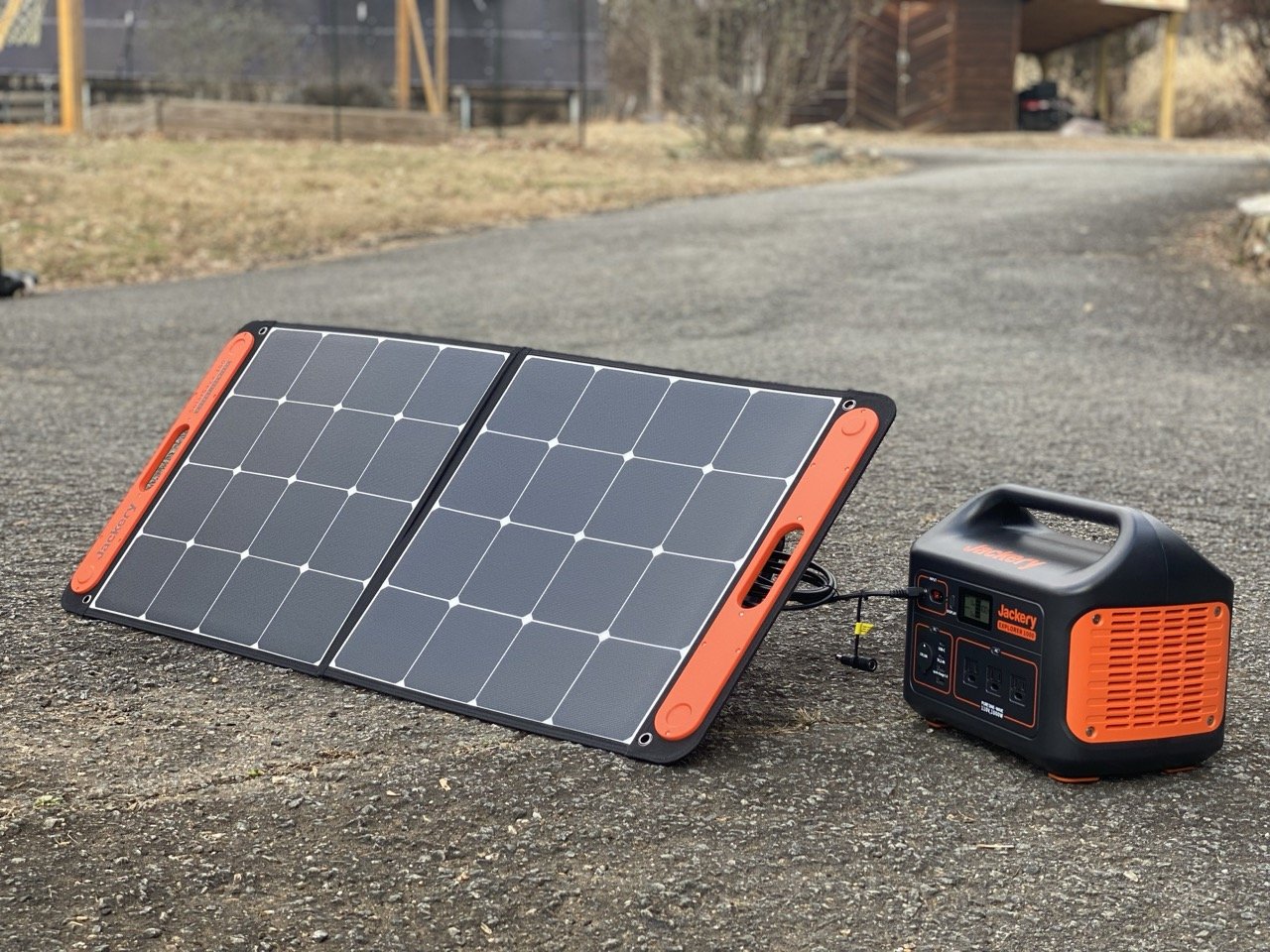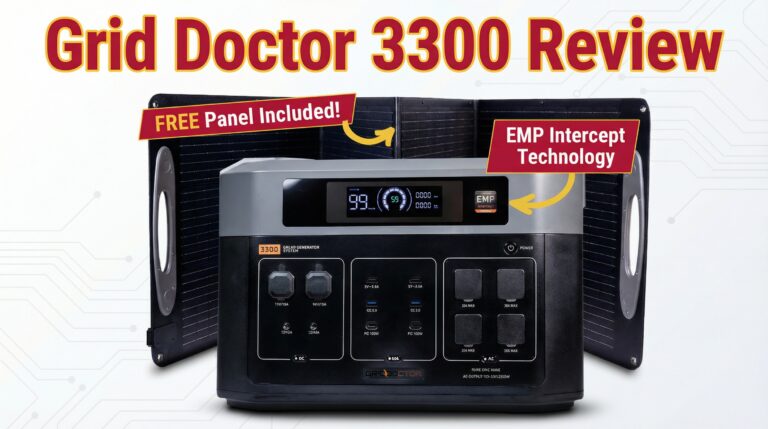
The quest for the most powerful solar generator ends with understanding what true power means in portable energy systems. Modern solar generators deliver unprecedented watt capacity and BTU equivalent output that rivals traditional gas generators while maintaining clean, silent operation.
Power requirements vary dramatically based on intended use. The most powerful portable solar generator for camping differs significantly from the most powerful solar generator for home backup. Understanding these distinctions helps buyers make informed decisions about their energy investment.
What Makes a Solar Generator Truly Powerful
Power measurement in solar generators involves multiple specifications that determine real-world performance. Continuous watt output indicates the sustained power available for running appliances. Peak or surge watt ratings show short-term power bursts needed for starting motors and compressors.
Battery capacity measured in watt-hours (Wh) determines runtime duration. A generator producing 2000 watts continuously from a 4000Wh battery operates for roughly two hours under full load. Higher capacity batteries enable longer operation periods without recharging.
The most powerful solar generator combines high continuous output with substantial battery capacity. This combination ensures both the ability to run demanding appliances and sustained operation over extended periods. Premium units achieve 7000+ watts continuous output with expandable battery systems reaching 90kWh total capacity.
BTU equivalent measurements help compare solar generators to traditional heating and cooling systems. A 3000-watt solar generator produces approximately 10,200 BTUs of energy per hour, sufficient for running most residential air conditioning units during peak demand periods.
EcoFlow Delta Pro Ultra: The Undisputed Champion
The EcoFlow Delta Pro Ultra currently holds the title as the most powerful solar generator available to consumers. This system delivers 7200 watts of continuous AC output with surge capabilities reaching 14,400 watts. The modular design supports expansion to 90kWh battery capacity through additional battery units.
Peak solar input reaches 16,800 watts when configured with 42 EcoFlow 400W rigid solar panels. This massive solar array can fully recharge the system in optimal conditions within hours. The bidirectional grid connection enables the system to function as a hybrid solar installation drawing from and feeding back to utility power.
X-Core 3.0 technology architecture provides industry-leading performance metrics. X-Stream charging achieves 80% capacity in just 50 minutes from AC power sources. X-Boost algorithm supports appliances up to 6000 watts including central HVAC systems. X-Quiet operation maintains whisper-quiet 30dB noise levels during operation.
Professional installation integrates the Delta Pro Ultra with existing home electrical systems through transfer switches and smart panels. The system automatically activates during power outages while supporting grid-tie operations during normal conditions.
Home Backup Powerhouses: Maximum Protection
The most powerful solar generator for home applications must provide sufficient capacity to maintain essential systems during extended outages. Whole-home backup requires 10-20kWh daily consumption capacity with peak demand handling for motor starts and HVAC systems.
Anker SOLIX F3800 represents another premium option for home backup applications. The system delivers 6000 watts continuous output with 7700Wh base capacity expandable to 53.76kWh through additional battery modules. Three 400-watt solar panels provide 1200 watts total solar input for daily recharging capability.
Goal Zero Haven 16kWh offers substantial battery capacity in a modular wall-mounted configuration. The system supports up to 10 120-volt circuits through its integrated transfer panel. While continuous output reaches 3600 watts, the massive battery capacity enables extended operation of essential home systems.
Professional installation and electrical integration distinguish home backup systems from portable units. Automatic transfer switches activate backup power within milliseconds of utility failure. Smart panels enable selective circuit control and load management through smartphone applications.
Portable Power Champions: Maximum Mobility
The most powerful portable solar generator balances high output capability with reasonable weight and size constraints. Units exceeding 100 pounds challenge true portability while maintaining professional power capabilities.
Jackery Explorer 3000 Pro delivers 3000 watts continuous output from a 3024Wh battery system. Built-in wheels and telescoping handle enable transport despite its 63-pound weight. The unit features multiple AC outlets including a 25-amp high-power outlet for demanding appliances.
EcoFlow Delta Pro 3 provides 4000 watts continuous output with 4096Wh capacity in a 114-pound package. The system supports parallel connection with additional units for doubled power output. Expansion batteries increase total capacity while maintaining portability of individual components.
Bluetti Elite 200 V2 utilizes automotive-grade flat-pack battery cells to maximize power density. The 2600-watt output from a compact form factor demonstrates advanced battery technology benefits. Premium construction and materials justify higher costs for discerning users.
Technical Specifications That Define Power
Understanding key technical specifications helps buyers evaluate competing claims about power capability. Continuous AC output represents sustained power available for running appliances without time limitations. Many manufacturers emphasize peak or surge ratings that operate for only seconds during motor starting.
Battery chemistry significantly impacts performance characteristics. LiFePO4 (lithium iron phosphate) batteries provide superior safety, longevity, and temperature stability compared to standard lithium-ion cells. Premium systems exclusively use LiFePO4 technology despite higher initial costs.
Inverter quality determines power output stability and compatibility with sensitive electronics. Pure sine wave inverters provide clean power suitable for all electronic devices. Modified sine wave inverters may cause problems with certain appliances while costing less to manufacture.
Solar charging input capacity affects recharge speed from photovoltaic panels. Systems supporting 1000+ watts solar input can achieve daily energy replacement through adequate solar panel arrays. Lower input ratings extend recharge times and limit off-grid sustainability.
BTU Calculations and Cooling Applications
Converting watt output to BTU equivalent helps compare solar generators to traditional heating and cooling systems. The conversion factor equals 3.412 BTUs per watt-hour of energy consumption. A 2000-watt generator produces 6824 BTUs per hour under full load operation.
Air conditioning applications require significant power for both compressor operation and fan motors. A typical 12,000 BTU window air conditioner draws 1000-1500 watts continuously with startup surge requirements reaching 3000+ watts. The most powerful solar generators handle these demanding loads without difficulty.
Heat pump systems present even greater power demands due to auxiliary heating elements and defrost cycles. Backup heating elements can draw 5000-15000 watts during cold weather operation. Only the largest solar generator systems provide sufficient capacity for whole-home heat pump backup.
Understanding BTU requirements helps size solar generator capacity for specific applications. Oversized systems waste money while undersized units fail during critical moments when backup power proves most valuable.
Safe Purchasing: Stick to Established Platforms
Purchasing high-capacity solar generators requires careful attention to seller reputation and buyer protection policies. Systems costing thousands of dollars demand robust transaction security and warranty support. Established marketplaces provide essential protections against fraudulent sellers.
eBay offers comprehensive buyer protection through dispute resolution systems and PayPal integration. Seller feedback histories provide transparency about vendor reliability and customer satisfaction. The platform’s global reach connects buyers with authorized dealers and manufacturers worldwide.
Amazon provides another reliable purchasing platform with strong return policies and customer service support. Prime shipping ensures fast delivery for heavy solar generator systems. However, prices may vary significantly between third-party sellers requiring careful comparison shopping.
Direct manufacturer purchases work well for established brands maintaining professional sales operations. Companies like EcoFlow, Jackery, and Anker provide factory warranties and technical support. Avoid unfamiliar brands offering limited-time promotions without established track records.
Power Output Categories and Applications
Solar generator power categories correspond to different use cases and budget levels. Understanding these categories helps buyers select appropriate systems without overspending on unnecessary capacity or underspending on inadequate power.
Small portable units (300-1000 watts) serve basic device charging and light appliance operation. These systems work well for camping, emergency phone charging, and laptop power during brief outages. Battery capacities typically range from 300-1500Wh providing several hours of operation.
Medium capacity systems (1000-3000 watts) handle more demanding applications including refrigeration, power tools, and small appliances. These units bridge the gap between basic backup power and whole-home solutions. Professional contractors often prefer this category for jobsite applications.
Large capacity systems (3000-7000+ watts) provide partial or whole-home backup capability. These units can operate major appliances including central air conditioning, well pumps, and electric heating systems. Expandable battery systems enable multi-day operation without grid power.
Installation and Integration Considerations
The most powerful solar generators often require professional installation for optimal performance and safety compliance. Whole-home backup systems integrate with existing electrical panels through transfer switches and load management systems.
Electrical permits may be required for permanent installations connecting to home electrical systems. Local building codes specify requirements for backup power systems and electrical safety standards. Professional electricians ensure compliance with applicable regulations.
Solar panel installation requires proper mounting, wiring, and electrical connections. Ground-mounted arrays offer flexibility for positioning and maintenance access. Roof-mounted installations require structural analysis and weatherproofing considerations.
Battery storage location affects system performance and safety requirements. Indoor installation provides climate control and security while requiring ventilation and temperature monitoring. Outdoor installations need weatherproof enclosures and freeze protection systems.
Maintenance and Longevity Factors
Premium solar generators require minimal maintenance when properly installed and operated within specifications. LiFePO4 batteries typically provide 3000-6000 charge cycles before capacity degradation becomes significant. This translates to 10-20 years of regular use depending on cycling frequency.
Battery management systems protect against overcharging, over-discharging, and temperature extremes. These systems automatically balance cell voltages and prevent damage from improper operation. Premium units include comprehensive monitoring and diagnostic capabilities.
Solar panel maintenance involves periodic cleaning and connection inspection. Dust and debris reduce power output while loose connections create safety hazards. Professional systems include monitoring capabilities to identify performance issues before they cause failures.
Inverter components represent the most complex electronic systems requiring proper ventilation and temperature control. Quality units include thermal protection and automatic shutdown systems preventing damage from overheating or overload conditions.
Future Technology and Power Trends
Emerging battery technologies promise even higher power densities and improved performance characteristics. Solid-state batteries offer potentially revolutionary improvements in energy storage capacity and charging speeds. However, current technology remains experimental with limited commercial availability.
Grid integration capabilities continue advancing with smart inverter technology and utility communication protocols. Future systems will provide enhanced grid support services while maximizing solar energy utilization and storage efficiency.
Modular system designs enable customization and scalability matching specific user requirements. Component standardization reduces costs while improving reliability and service availability. Users can start with basic systems and expand capacity as needs evolve.
Making the Ultimate Power Choice
Selecting the most powerful solar generator requires balancing maximum capability against practical considerations including budget, installation requirements, and actual power needs. The EcoFlow Delta Pro Ultra represents the current pinnacle of solar generator technology for users requiring maximum power capability.
However, most users achieve better value through systems sized appropriately for their specific applications. A 3000-watt portable system often provides better cost-effectiveness than a 7000-watt whole-home installation for occasional use scenarios.
Consider expandability options when choosing between competing systems. Modular designs allow capacity growth as needs change while protecting initial investments. Fixed-capacity systems may require complete replacement as power requirements increase over time.
Professional consultation helps optimize system design for specific applications and budgets. Experienced installers can recommend appropriate configurations while ensuring safety and code compliance throughout the installation process.
The most powerful solar generator ultimately provides the perfect balance of capability, reliability, and value for your specific power requirements. Choose wisely and enjoy years of clean, silent, abundant power whenever and wherever you need it most.






